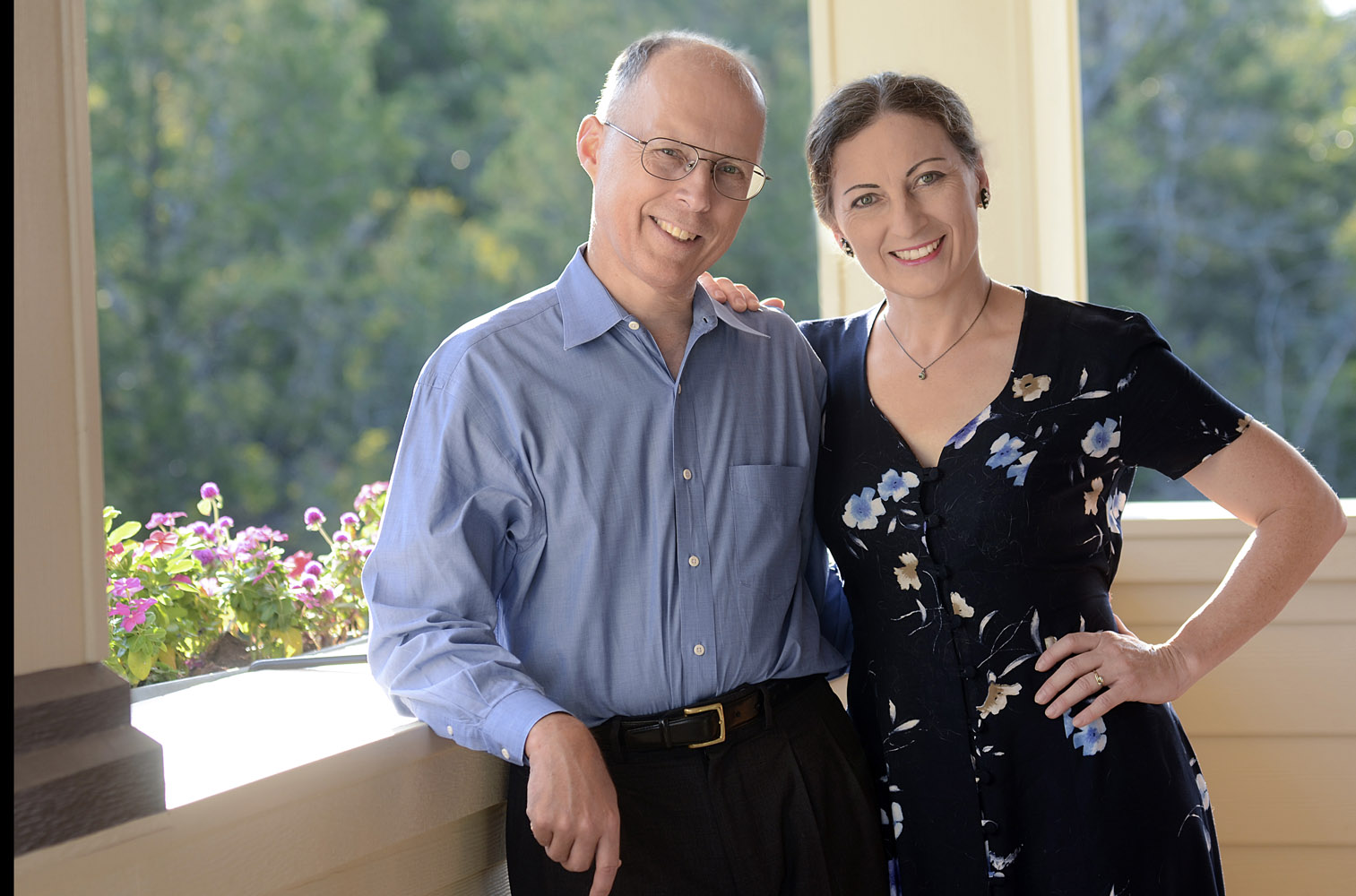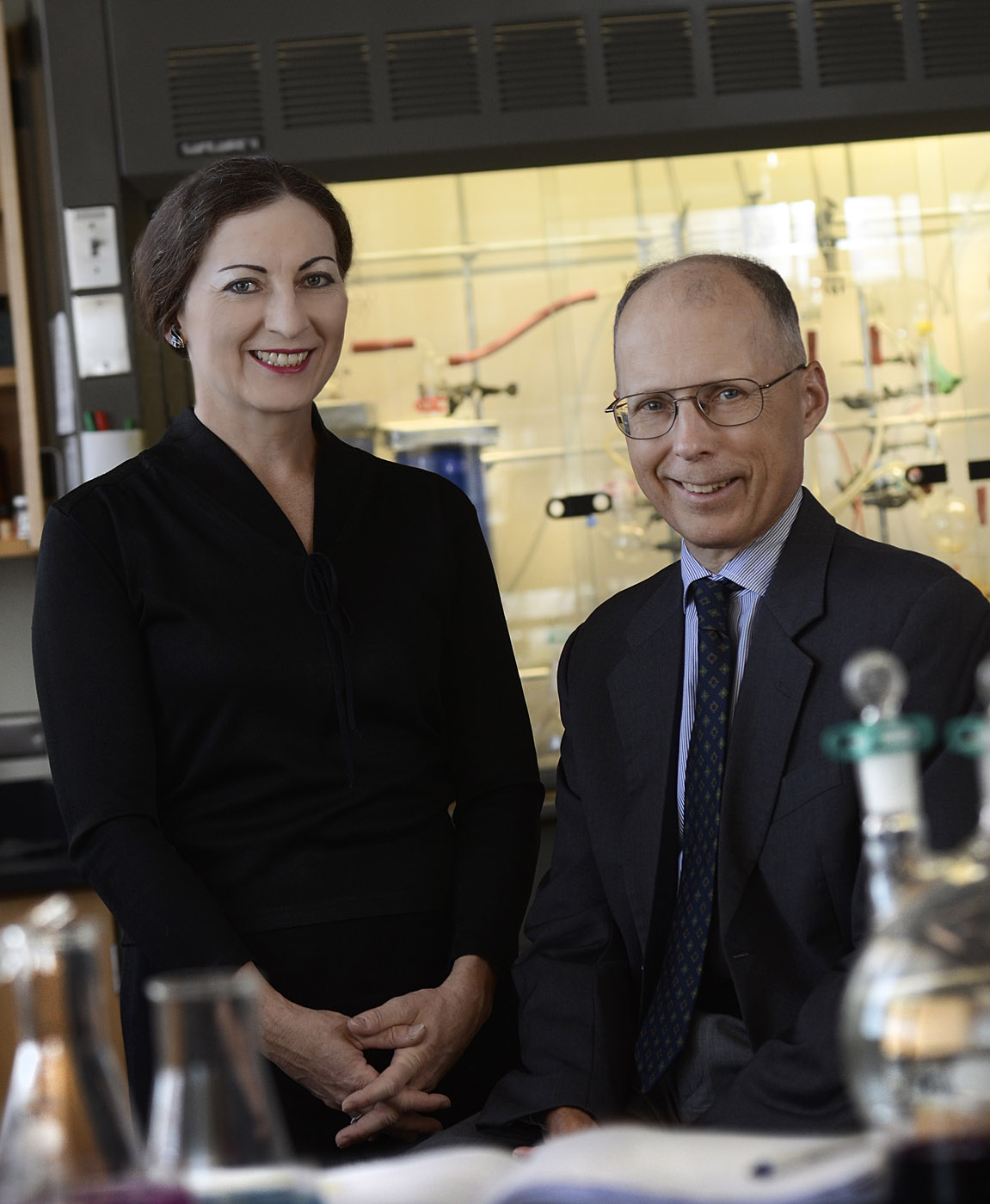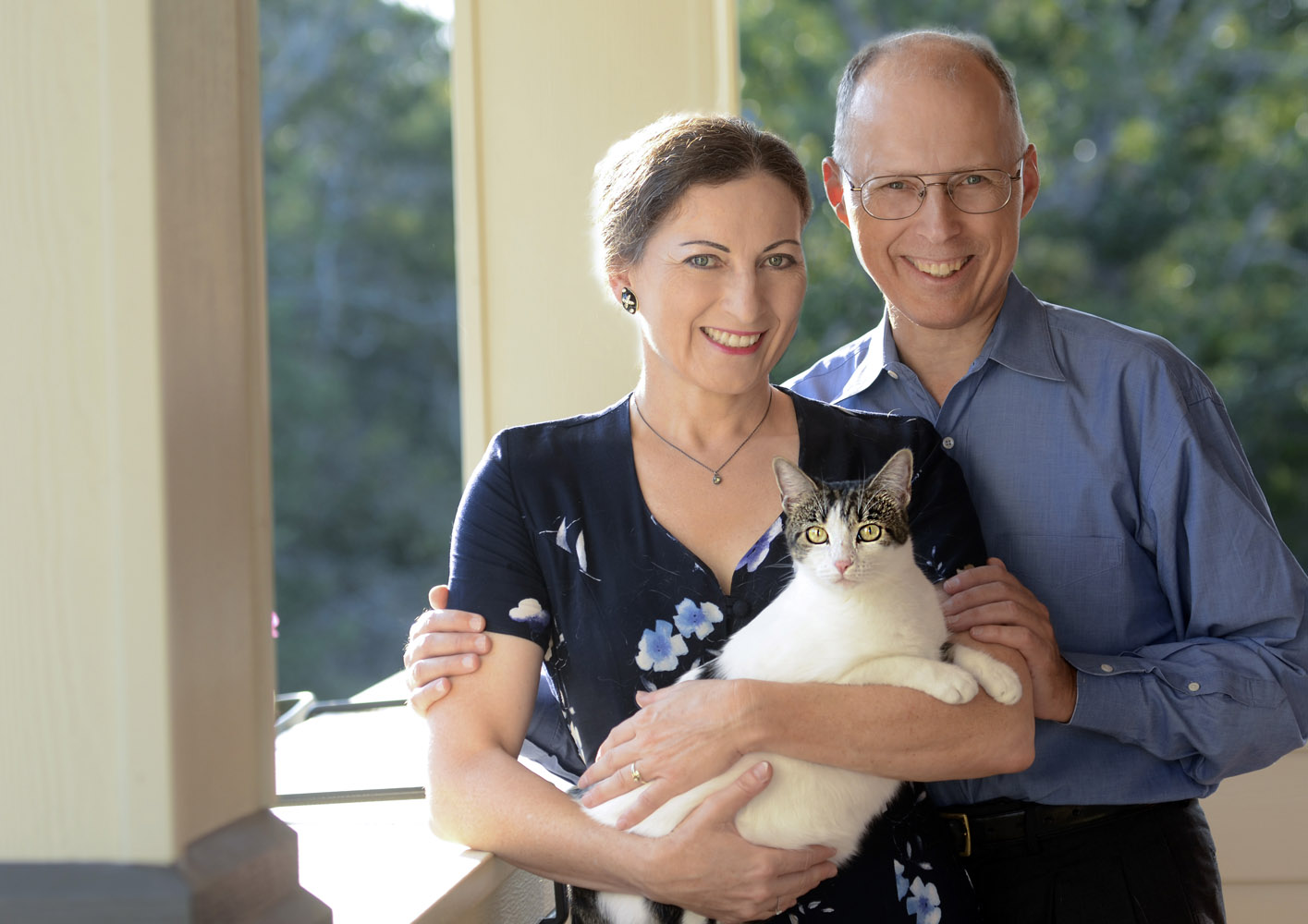 Partners in love and life, Texas A&M professors Janet Bluemel and John Gladysz are using their estate plan to create two future chairs and an unrestricted gift in the Department of Chemistry to benefit generations of Texas A&M chemists and students to come.
Partners in love and life, Texas A&M professors Janet Bluemel and John Gladysz are using their estate plan to create two future chairs and an unrestricted gift in the Department of Chemistry to benefit generations of Texas A&M chemists and students to come.
Scientists so often are personally motivated by many of the same characteristics that help determine their professional success.
Take, for instance, Texas A&M University chemists Janet Bluemel and John A. Gladysz, respective global innovators in inorganic and organometallic chemistry whose characteristic attention to detail, laser-like focus on tasks at hand, meticulous planning ability and dogged determination to impact the worldwide landscape of their profession has resulted not only in individual accomplishment but also the largest planned gift in the history of the Texas A&M Department of Chemistry.
Partners in love and life, the couple made provisions in their estate plan to establish two future chairs, the John A. Gladysz Chair in Chemistry and the Janet Bluemel Chair in Chemistry, as well as an unrestricted gift to benefit the department. They chose to make this significant gift, which was created through the Texas A&M Foundation, using a bequest and individual retirement account (IRA) beneficiary designations.
"We wanted to fund something that would be difficult or unusual to acquire from state, federal or industrial sources, but yet also would greatly enhance the research and teaching missions of the university as well as its academic ranking and prestige," Gladysz said. "Simply put, the Department of Chemistry, the College of Science and Texas A&M University collectively have a singular commitment to excellence, as evidenced by research expertise in a number of forefront areas, and innovative and caring approaches to undergraduate and graduate education."
The distributions from the endowments for both chairs will be used to support the teaching, research, service and professional development activities of the holders. In both instances, preference will be given to organic and inorganic chemists, but that's where the similarities purposefully end. Gladysz' namesake chair will be awarded to scholars engaged in world-class fundamental research, while Bluemel's will be restricted to reward worthy internal candidates, ideally as part of retention packages.
 Moving to Texas in 2007 as new hires under Texas A&M's faculty reinvestment program allowed Bluemel and Gladysz to work not only on the same campus but also in adjacent laboratories.
Moving to Texas in 2007 as new hires under Texas A&M's faculty reinvestment program allowed Bluemel and Gladysz to work not only on the same campus but also in adjacent laboratories.
Gladysz, who came to Texas A&M as a tenured professor and the inaugural holder of the Dow Chair in Chemical Invention, is well aware of the immediate and long-term value of endowed faculty positions -- appointments he knows from experience are rare when it comes to recognizing current professors for their excellence, not to mention their loyalty to their university.
"So often, chairs are awarded to external superstars as part of a recruitment process," Bluemel added. "That was the case with us. However, this default procedure overlooks the tremendous 'home-grown' talent we have here at Texas A&M. So when we endowed one of the two chairs, we specifically requested that it be used to recognize faculty who are already at Texas A&M; in other words, those who have climbed up through the ranks to the threshold of superstar status. Let's recognize them and not let them be picked off by competing institutions.
"When we look back at the types of people who voted to hire us at Texas A&M, many were in this category. This is our attempt to say 'thank you' to future generations of faculty colleagues who have richly earned internal and external recognition."
Before they joined the Texas A&M faculty in 2007, Bluemel and Gladysz both spent decades as chemistry professors at a number of international institutions, including UCLA, the University of Utah, UC Berkeley, the Technical University of Munich, the University of Heidelberg and the University of Erlangen-Nuremberg.
"Prior to moving to Texas, we were teaching at two different universities (Heidelberg and Erlangen-Nuremberg), separated by a rather hellish 5-hour automobile commute or a sequence of four train and two bus rides," Bluemel said. "The generous and farsighted offers we received from Texas A&M, which required much effort on the part of several chemistry colleagues and university administrators, allowed us to bid adieu to a 'weekend marriage' and put down real roots."
Gladysz notes it was in part due to that former geographical distance that the couple "never got around to starting a family." In absence of having descendants or other close relatives, he says they made the collective decision to impact the future in another area near and dear to their hearts -- the institutions that played key roles in their growth and development as professors and people.
 Avid animal lovers, the couple own cats as well as a donkey and have provided for their beloved pets through a separate gift to the Stevenson Animal Center.
Avid animal lovers, the couple own cats as well as a donkey and have provided for their beloved pets through a separate gift to the Stevenson Animal Center.
"It made the most sense to simply draft a comprehensive will, which also contains some bequeaths or giving to the University of Utah, the University of Michigan -- my undergraduate degree -- and Western Michigan University, which allowed me to start college when I was only 15 and educated many members of my family," Gladysz said. "We also made sure that our cats would be guaranteed happy homes with a separate gift to the Stevenson Animal Center."
Beyond tailoring their efforts to benefit the colleges and causes of their choosing, the couple was equally strategic in their method, opting to maintain control of their estate while significantly benefiting the university as their ultimate legacy.
"This giving method seems optimal in this day and age of stratospheric medical costs and other types of expenses that one can be hit with in the post-retirement years," Gladysz said. "We also structured our will to help protect the real-dollar value of the chairs we endowed from being eroded by inflation before the Foundation reaps the proceeds at some date in the future."
The duo says endowed chairs represent important altruistic giving opportunities independent of influence from external forces that are vital to ensuring that Texas A&M and the United States maintain a balanced portfolio of discovery-based research capable of creating jobs and delivering the innovations of tomorrow.
"Endowed chairs are an excellent means of seeding transformative research in areas that are overlooked by extramural funding sources," Bluemel said. "And it is very often the case that those capable of transformative research bring special talents and skills into the classroom.
"Texas A&M University is a tremendous marketplace of creative ideas and initiatives that have little in the way of counterparts in other institutions throughout the country. It is critical for all stakeholders to do everything possible to sustain and never waver from a 'flagship mentality' that benefits the state, nation and world. Our dream is that some day, Texas A&M can truly realize all of the goals embodied in Vision 2020. Gifts will be essential to achieve this in a sustainable way."
Click here to see a complete list of endowed faculty chairs and professorships within or affiliated with the College of Science.